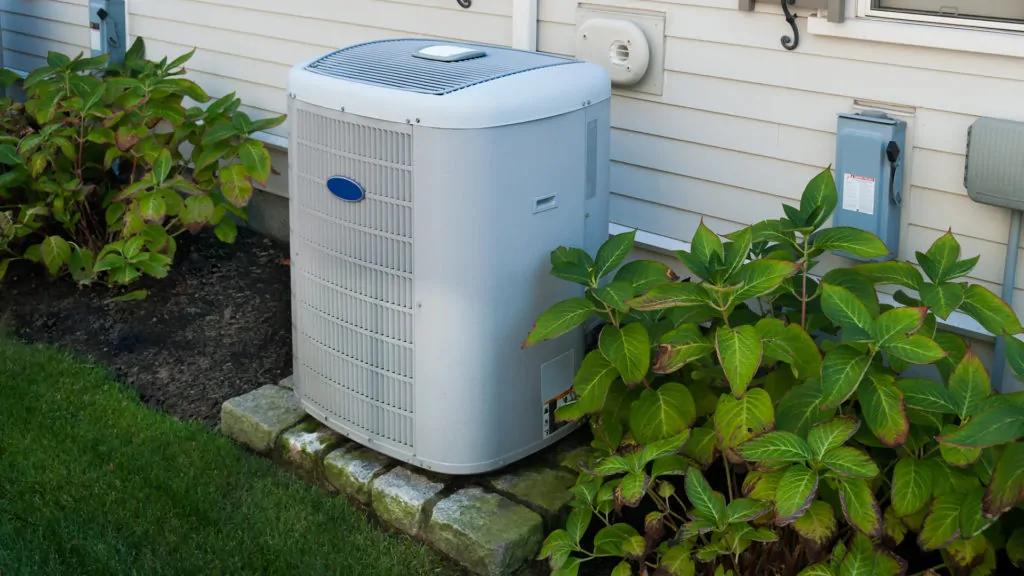Choosing the Right Central Air Conditioner for Your Home
For some homeowners, choosing a new AC system can be as simple as heading to the nearest big box store and picking a window unit off the shelf. But for those who desire central heating and cooling, selecting from among all the different types and varieties of AC units can leave them wondering – which is the right option for me?
At AC Designs, our expert technicians are here to help you find the best central air conditioner for your home so you can stay comfortable all year long.
Split Systems
Split systems are the most common type of central air conditioner, and they are generally the most economical to install in a home with a central furnace.
They function by splitting up the evaporator coil, which removes heat and moisture from the air, from the compressor and condenser coils, which provide cool air throughout a home via air ducts. Evaporators are typically found in a cabinet or tucked away in a closet, and the condenser coils and compressor are usually located outside of the house.
Packaged Central Air Conditioners
This system, as its name suggests, packages the evaporator, condenser, and compressor into a single unit. It is typically placed on the roof or a concrete slab near the home.
Packaged central air conditioners operate by drawing air from a home, converting it to cool air, and then returning it inside through ductwork. For the system to produce warm air it must be combined with a set of heating coils, eliminating the need for a separate indoor furnace.
Heat Pumps
Another type of split system, heat pump units are uniquely designed to accommodate both warm and cool temperatures. During the summer months, this system operates by removing hot air inside your home and pumping it outside.
In winter months, heat pumps extract warm air from outside to heat the home. Due to the design of this system, heat pumps are typically a good choice for areas that do not experience freezing temperatures for long durations.
Ductless Mini-Splits
These ductless systems are a viable alternative to window AC units in homes that don’t have ductwork in place for central air. Ductless mini-splits operate similarly to a basic split system by combining an outdoor compressor with indoor air-handling units.
The indoor units are often mounted high on a wall with blowers attached. The indoor and outdoor units are connected with tubing, and air is circulated with refrigerant to produce the desired temperature. Keep in mind, with this kind of system each indoor unit is only intended to regulate the temperature in the room it is mounted (much like a window unit).
Consider AC Seer Rating
All central air conditioners boast a Seasonal Energy Efficiency Ratio (SEER) rating, which gives homeowners a good indication of how efficient the unit is. The AC SEER rating is calculated by taking the cooling output of the AC over a typical cooling season and dividing this number by the number of watt-hours the AC consumed over this period. The higher the SEER rating, the more efficient the unit.
While many older units are only 8 or 9 SEER, federal and state guidelines require any new units sold to meet a certain minimum SEER standard. For many states, including Florida, the lowest possible AC SEER rating for a new unit is 14. Each of the major AC manufacturers, including Goodman, Carrier, Trane, and Rheem, offer central AC units ranging from 14 SEER to 22 SEER and up.
When Do You Need an AC Replacement?
Knowing when it’s time for an AC replacement depends on a few key factors. If your current system is over 10-15 years old, constantly needing repairs, or causing your electricity bills to soar, it is most likely time for an upgrade. The HVAC professionals at AC Designs can help assess your system’s condition and provide personalized recommendations on the AC replacement right for you.
Request a Home Evaluation Today
With several unit options and operational factors to consider when installing a new heating and cooling system in Jacksonville, it pays to have an experienced professional on your side. At AC Designs, our team will guide you through the process of selecting the right unit for your home, budget, and lifestyle.
We even offer a free lifetime warranty and a 10-year labor warranty on select systems, ensuring your investment and home comfort are protected. Call us today or fill out the short contact form to request a free home estimate.

